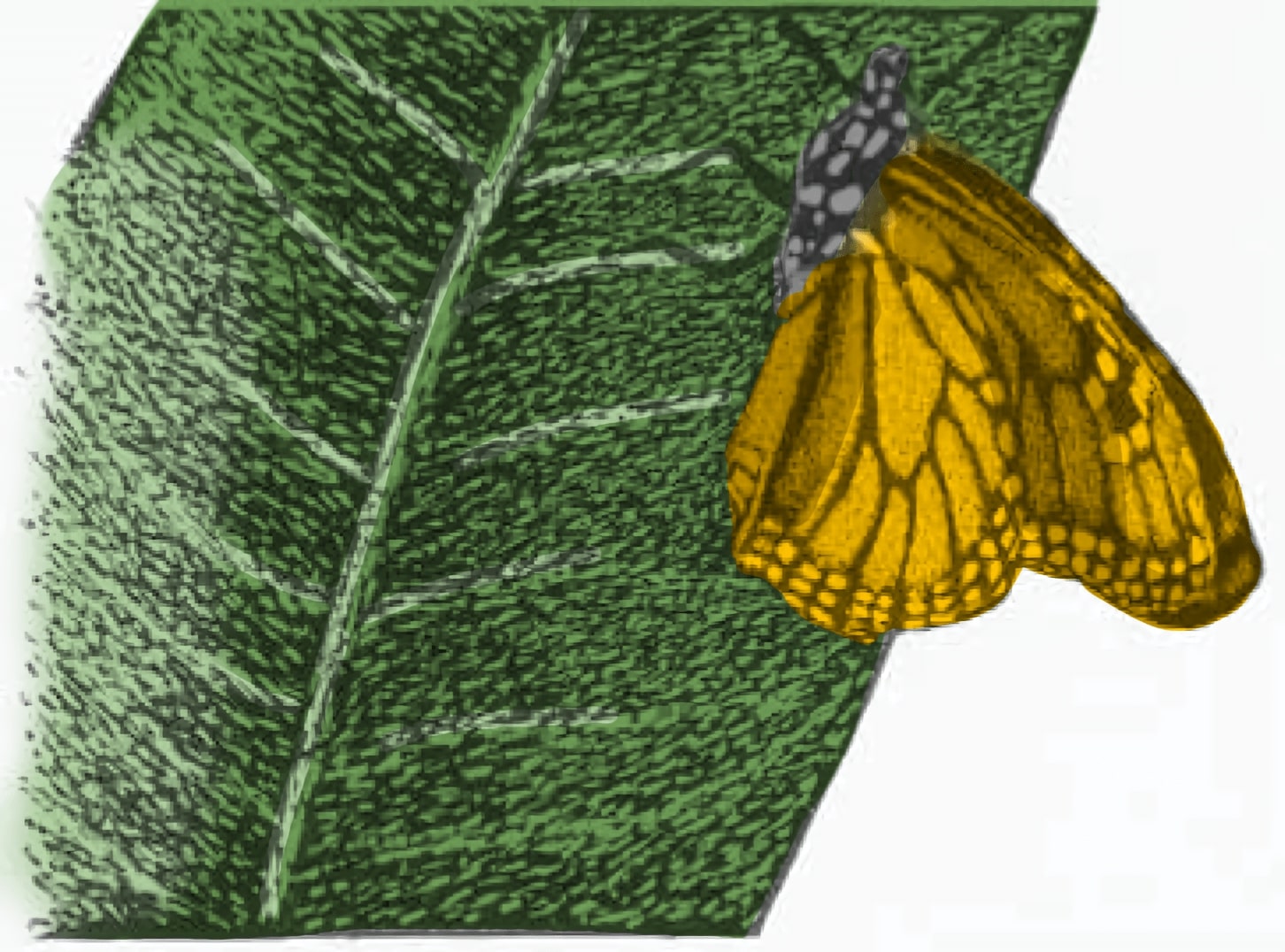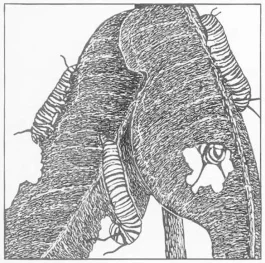Read by Matilda Longbottom

Last spring, I attended a lecture at my local library entitled, “How To Create a Pollinator Garden.” The speaker impressed upon us the importance of including milkweed, the sole host plant for Monarch butterfly caterpillars, when planning our gardens. I learned for the first time that Monarchs are at risk of becoming endangered due to the loss of their natural habitat. Determined to do my share, I did plant milkweed in addition to a host of other pollinator-attracting plants.
As the summer progressed, most of the garden was thriving—but not the milkweed. It had grown only a couple of inches. I made a mental note to think twice before growing any in the future.
One morning while watering the garden, however, I was surprised to find six caterpillars scattered on our tiny milkweed plants. I looked online and, yes, those were the yellow-, black-, and white-striped caterpillars that become Monarch butterflies!
Growing larger by the day, they quickly ate through our meager plants. I made a few frantic phone calls to local native nurseries in search of some more. It was too late in the season to buy plants. Fortunately, one nursery owner knew of a spot where milkweed grew along an abandoned railroad track.
My husband, Don, and I drove out there, and after some sleuthing, discovered the patch. We cut a few of the best leaves, put them into a vase filled with water, and placed them in our garden next to the existing milkweed. By the next morning, the caterpillars had discovered the fresh batch. After several days of non-stop eating, they had pretty much chewed through it, as well.
We made a second trip to the railroad track and carefully secured more milkweed. But then, while I was dumping the old leaves out of the vase, I discovered a caterpillar lying limp in the greenish water. I picked the poor thing up and placed him on the choicest leaf of the new supply, hoping for a miracle. After all, I was trying to save monarchs, not drown them. To my surprise, it unfurled and began eating.
Shortly afterwards, I was dozing in a lawn chair in a shady spot of our garden when I was awakened by my daughter’s shrieks: “Mom! There’s a bug near your foot!”

I looked down, and sure enough, it was one of the Monarch caterpillars. We felt that it must have been the one that I had rescued, and that it had traveled nearly 20 feet to thank me. After we bonded for a moment, I returned it to its leaf. Within a few days, the six caterpillars grew to full size and—suddenly—were gone.
Every day I looked out for them. I had just about given up hope when, one sunny afternoon, I found three beautiful young Monarchs fluttering amid the zinnias. I felt both proud and grateful that my garden was their home. And I knew that they were getting ready for the long trek southward in the great Monarch migration.
Mine was a small but important part of the effort to save the Monarchs, and I am committed more than ever to create a safe haven for the return of their descendants this coming summer. Don dug out large portions of our lawn just for them. We’ve planted a huge variety of wildflower seeds and will sow and transplant lots of milkweed to provide a virtual smorgasbord for the butterflies.
The Monarchs and us? We’re just getting started. ❖


 Previous
Previous


Inspiring care and love